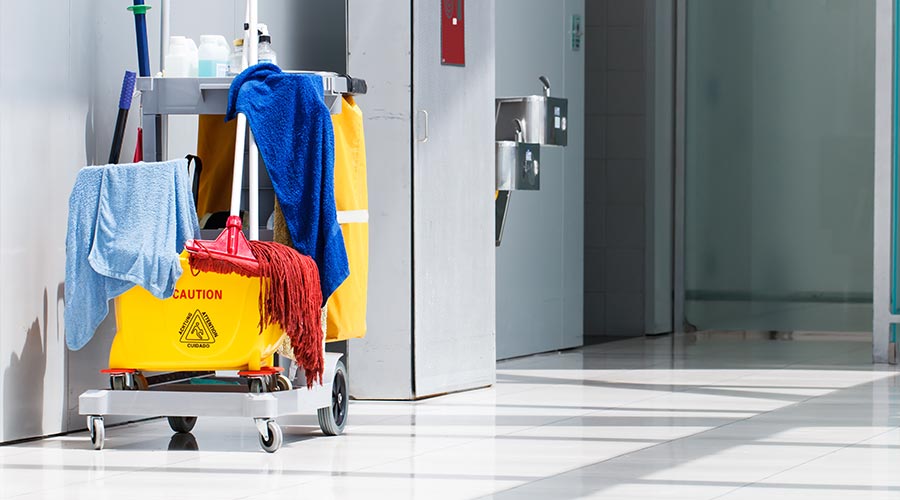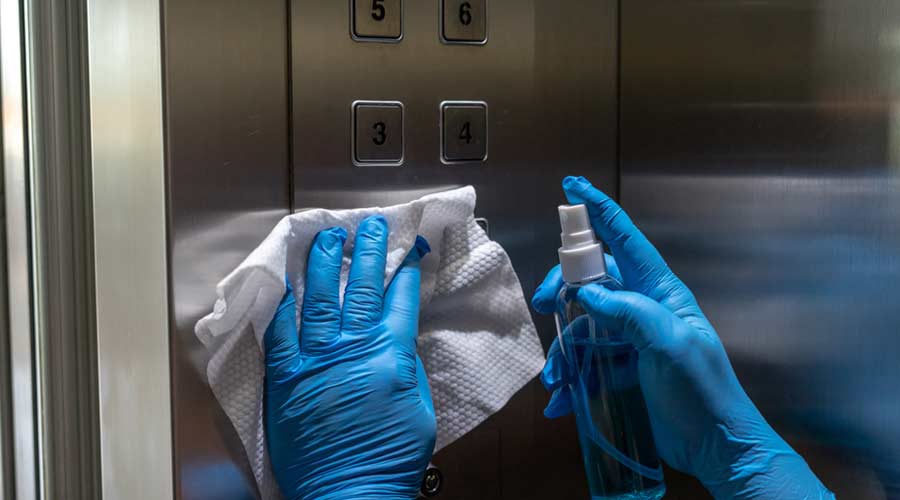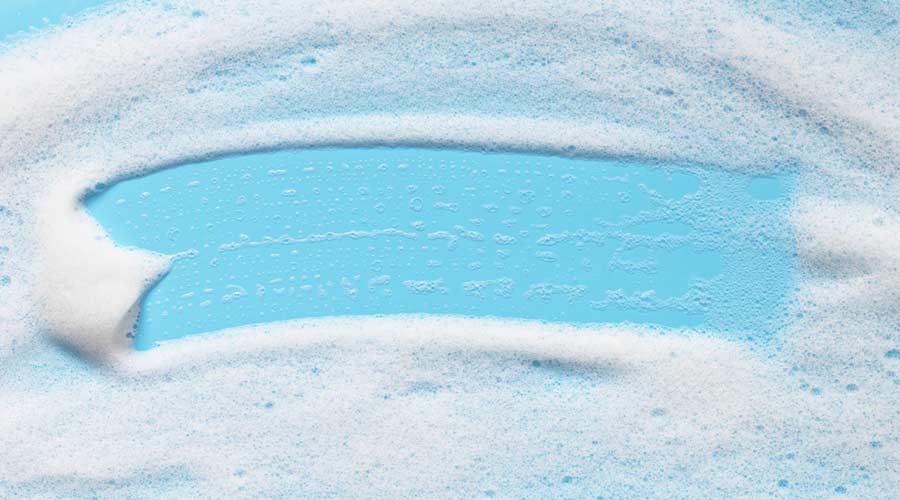
With building occupants more aware of their surroundings, are you noticing an increased demand for specific services?
MARTINEZ: Yes, there has been a noticeable increase in demand for specific facility services as building occupants become more conscious of health, hygiene, and overall environmental quality. The most frequently requested services include:
Enhanced Disinfection Services: Since the COVID-19 pandemic, there’s sustained interest in high-touch surface disinfection to prevent pathogen transmission.
Restroom Hygiene and Care: Users are expecting consistently clean and well-stocked restrooms, with some facilities even moving toward touchless technology to reduce contact points.
IAQ Improvements: Demand for better ventilation, air purification systems (e.g., HEPA filters, UV-C light), and IAQ monitoring has increased significantly.
Odor Control: More attention is being paid to how spaces smell, particularly in restrooms, locker rooms, and common areas. Scenting and odor-neutralizing technologies are being implemented more widely.
Green Cleaning Products and Practices: With health awareness comes environmental awareness. Occupants are looking for facilities that use eco-friendly and non-toxic cleaning solutions.
These shifts reflect a broader expectation for transparency in facility hygiene practices, and a desire for spaces that feel clean, safe, and healthy.
WALTON: I think this depends on the person as we are all different. Odor control is always a big issue. For me, clean has no smell. If the space is filled with perfumes, something is being covered up. Restrooms leave a big impact on guests and staff alike. The demand is always high there.
CROWELL: I have not noticed this to any great extent.
BOYD: Yes, especially post-COVID-19. There is a definite rise in specific work orders related to odor control, mold/mildew, and restroom care.
KRAUSE: We have had an increased interest in indoor air quality (IAQ). As a result, we have been working with campus partners and stakeholders to improve our air quality.
How are you staying current with public health guidelines and infection control protocols?
WALTON: I subscribe to our states public health newsletter, keep track of web postings, and things of that nature.
CROWELL: I am involved in quality and infection prevention at all levels.
KRAUSE: We have multiple ways to do that. Aside from following CDC and EPA guidelines, we have our Environmental Health Services department on campus that we work side-by-side with in a multitude of areas, including our cleaning chemicals and procedures.
BOYD: I stay current through networking events such as Clean Buildings Conference and the ISSA Show North America, as well as reading industry magazines and articles through Cleanlink, Cleaning & Maintenance Magazine, APPA, and Facilities Cleaning Decisions Magazine, and keeping connections with others in the industry to include vendors.
What products or practices are most effective for maintaining indoor air quality in high-traffic spaces?
BOYD: One thing that stands to support indoor air quality is the use of HEPA (High Efficiency Particulate Air) filters. Another is the use of air purifiers.
WALTON: You need a good HVAC system, and a good contractor to service it, regularly.
KRAUSE: Our biggest practice is to not use aerosols for cleaning and maintenance in high traffic spaces. We also use air purifiers and higher than standard air filters.
MARTINEZ: We use High-Efficiency Air Filtration Systems:
HEPA filters (High-Efficiency Particulate Air) are excellent for capturing fine particles like dust, pollen, and mold.
MERV 13 or higher filters for HVAC systems strike a balance between filtration and airflow in commercial settings. This is a good option if you have the budget to sustain MERV 13. They are more expensive (double price of MERV 8) and require more change outs during the year. They can also shorten the life cycle of the HVAC system due to the high filter restrictions, it forces your equipment to run harder. ASHRA changed the standard from MERV 8 to MERV 13 during the pandemic to help mitigate the spread of COVID.
Also consider Air Purifiers with HEPA and Activated Carbon Filters. These are ideal for standalone use in problem areas.
There's Demand-Controlled Ventilation (DCV), which uses CO2 sensors to adjust ventilation based on occupancy, optimizing airflow and energy efficiency.
And Humidity Control Systems:
Maintaining indoor humidity between 40-60 percent helps prevent mold and supports respiratory health.
Dehumidifiers or humidifiers may be needed depending on climate and HVAC design.
In terms of effective practices:
Regular HVAC Maintenance:
Includes filter replacement, duct cleaning, and equipment inspections to ensure proper function.
Use of Low-Emission Building Materials and Furnishings:
Select products certified for low VOC emissions (e.g., GREENGUARD, FloorScore).
Cleaning Protocols with Low-VOC Products:
Avoid harsh chemicals; use certified green cleaning products.
Proper Ventilation:
Ensure sufficient outdoor air exchange, especially in crowded spaces.
Mechanical ventilation should meet ASHRAE 62.1 standards.
Source Control:
Isolate or ventilate areas with high pollutant generation (e.g., printing rooms, kitchens).
Prohibit smoking indoors and near entrances.
Real-Time Air Quality Monitoring:
Use sensors to track CO2, PM2.5, temperature, and humidity.
Enables data-driven IAQ adjustments.
What’s your outlook for the jan/san industry over the next 1–3 years?
WALTON: I think labor will be an issue that will only get worse. I think AI will take more time to get used to. I think at no time was the custodian more appreciated than during COVID. People realized how hard the job was and how much that role was needed. It gave the custodian a bit of wiggle room to demand things such as technology and standards.
KRAUSE: I hope things only continue to improve in terms of environmentally friendly cleaning supplies, methods, and equipment. I think that there will be increased interest in this area as folks become more aware of their surroundings and health.
MARTINEZ: Post-pandemic awareness around cleanliness and disinfection remains high across sectors — from healthcare to education, retail, and offices. This is expected to sustain demand for cleaning products, disinfectants, and services, even if usage moderates slightly from peak pandemic levels.
Ongoing labor shortages and wage inflation may challenge service providers, potentially driving further automation and higher pricing for jan/san services.
There’s increasing demand for green-certified cleaning agents, compostable liners, and water-saving equipment. Suppliers emphasizing ESG goals are likely to outperform others.
Many organizations are continuing to outsource janitorial services for efficiency and compliance reasons. I believe the commercial cleaning segment, especially in healthcare, foodservice, and industrial settings, will likely expand.
BOYD: I see an increase in the need for skilled workers, both in leadership and frontline hands-on positions. I also see the continued creation of new innovative products and chemicals to help increase the outcomes of clean standards in the near future.
Many managers benefit from networking with other professionals, but struggle with finding appropriate groups. How do you stay connected with peers and network with other professionals?
BALDWIN: I am a longtime member of APPA-Leadership in Educational Facilities, which allows me to network with other like-minded professionals from across the country.
CROWELL: I get involved with statewide groups across multiple healthcare related providers.
WALTON: This is honestly difficult to do. I read publications and things of that nature but as for face-to-face networking, that is not something I have been able to tap into.
KRAUSE: I’m lucky; I have a pretty extensive network of colleagues that I’ve worked with over the years, as well as vendors, suppliers, and contractors. We touch base pretty regularly. I also never hesitate to reach out and share contact information or request suggestions on new contacts I can make.
BOYD: On a local level I am a member of and attend the Virginia School Plant Managers Association meetings and conferences. On a more national level, I attend ISSA, APPA, and Clean Buildings Conferences.
Product Trends Impacting Cleaning Departments

 The Down and Dirty on Cleaning in Virus Season
The Down and Dirty on Cleaning in Virus Season How Surfactant Use is Expanding in Commercial Cleaning
How Surfactant Use is Expanding in Commercial Cleaning